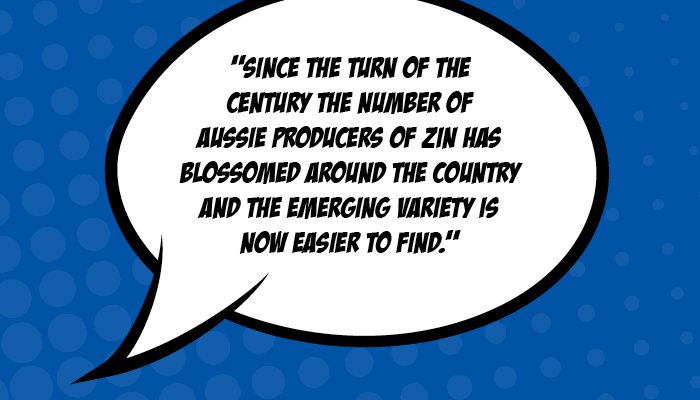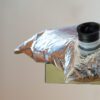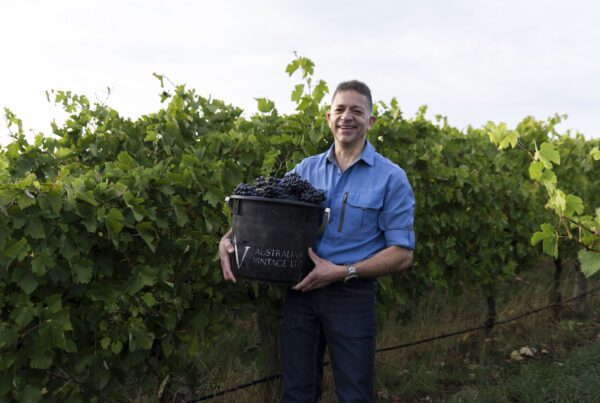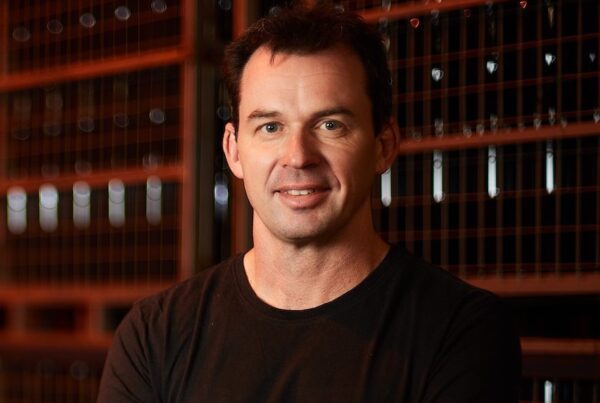
You say zinfandel, I say primitivo. Chaos and confusion aside, Australia is making cracking zinfandels and more and more winemakers are giving it a go.
There has been much ado in recent times about the fact that the USA’s big red megastar variety, zinfandel, and the svelte, slick, Italiano red, primitivo, are genetically identical. Well, in fact the ‘Bible’ (Wine Grapes by Jancis Robinson et al) says they are both actually the Dalmatian (Croatia) variety tribidrag – not quite as sexy or appealing a name as zinfandel or primitivo. It took four pages for them to explain the chaos and confusion, including the ‘Zinquest’ starting in the late 1990s that eventually proved it all. They had previously been misidentified as being another Croatian variety, plavac mali. Huh?
I’ll give the last words on this complex situation over to Wayne Farquhar of Dell’uva Wines. The horticulturalist, viticulturist and a former CEO of the South Australian Vine Improvements says: “When tested, they both have the same DNA, but so too is the DNA of pinot gris and pinot noir, yet both wines are completely different. My experience here in the Barossa with both of these varieties is that the resulting wines are quite different. Most blind tasters think they are tasting different varieties, but we now know this to be untrue due to DNA fingerprinting showing them as having the same DNA. The dilemma for consumers in Australia is that due to our ability to use synonyms for names, you can give zinfandel a sexy name and call it primitivo in an attempt to gain a marketing advantage by using the popular ‘Italian’ name or vice versa.”
Having cleared that up, let’s talk about zinfandel. The big, muscly American version of tribidrag, whose spiritual home is California, where it is made into all sorts of wine, from the oh-so-sweet/sugar ‘white zinfandel’ (which sells three to four million cases a year in the US) through to what I consider to be its pinnacle, Ridge Vineyards. Until his recent retirement, zin guru Paul Draper made 13 distinctly different zinfandel wines. Most have a smidge of another variety or two in support of the superstar zin, to highlight the distinctive flavours being aimed for. For example, the Ridge York Creek has a modicum of petit syrah (durif) to support the zin, whereas the Lytton Springs (my favourite of the five different Ridge zins I have tasted) has a smidge of petit syrah, carignan and mataro (monastrell) in it. Every one is sensational and I would urge you to try any of the Ridge Vineyard wines if you get the opportunity as they are what I consider to be the ‘American Grange’.
While the vast majority of zinfandel comes from California with its 20,000 hectares (second only in plantings to cabernet sauvignon), thanks to its domestic popularity, it has spread to almost every grapegrowing state in the USA. However, one might wonder how much Californian juice is in some of the wines produced in the colder American states.
A small amount of zinfandel is grown in Israel, there are minute quantities in South Africa and it is becoming more plentiful in Australia. It is hard to get a handle on how much zinfandel is actually grown here because a considerable amount is grown as primitivo, and some growers like McLaren Vale’s Kangarilla Road produce the variety as both primitivo (earlier picked) and zinfandel (later picked).
Until recently it was a challenge to find a bottle of Australian zinfandel, but since the turn of the century the number of Aussie producers of zin has blossomed around the country and the emerging variety is now easier to find.

Cargo Road 2015 and Orange NSW Zinfandel 2016 – Big zins with 16.7 percent alcohol. Both these wines were delightful, big, rich wines with just a hint of ‘cool-climateness’ about them. They were still a tad taut and restrained but divinely full-flavoured, even having a smidge of fruit sweetness on the front palate. Awesome.
Lowe Mudgee Organic Zinfandel 2013 – Dry-grown bush vines, wild yeast fermented in open concrete fermenters. This is an uber complex wine, so rich and balanced with a just hint of fruit sweetness. It is a scrumptious big wine, which is perhaps just a smidge less varietally defined than some of the others. Big and complex.
Grove Estate Hilltops Zinfandel 2013 – Single vineyard. I also found a bottle of the 2007 in my cellar and was able to see how the wine develops over time. Both wines were slightly lighter in style, but still big wines, smooth with oodles of fruit flavours and a lovely finish. The 2007 is just starting to develop some leathery characters and is at its complex best right now; the 2013 has eons of life ahead of it. Delightful.
Mandalay Road Geographe Top Block Zinfandel 2015 – This was the only WA zin producer I contacted that sent a sample. But what a sample! Fantastic. Soft, gentle nose with faint perfume. Plenty of fully ripe fruit flavours with a hint of nutmeg. It is smooth and delicious with a finish that is reminiscent of the California zins – full flavoured with great balance. Bloody great.
The Victorians were ably represented by the irrepressible monster winemaker Andrew Sutherland Smith, whose Warrabilla Rutherglen Limited Release Parola’s Zinfandel 2013 weighed in at 17 percent. It was massively deep coloured, almost black. A thumping great wine that could be described as a delicious liquid steak in every glass. An outstanding very big wine. Monsterously delicious.
Rusticana Langhorne Creek Zinfandel 2013 – Light in colour for the variety, with attractive, slightly cooler-climate characters like the hint of black pepper on the bouquet, along with some spice. It has fresh, youngish flavours for its age, with an alluring savoury hint. Very drinkable.
Kangarilla Road McLaren Vale Black St Peters Zinfandel 2014 – Nice deep, dense colour with very soft aromas. Ever so smooth, rich and unctuous. Absolutely divine. Just needs a smidge more time to round out. Superb.
Big Red Wine Company McLaren Vale Silent Noise Shiraz Grenache Zinfandel 2017 – The only blend in the line-up. Lovely purple colour. Vibrant plummy aromas, full flavoured, tasty and beautifully balanced with silky tannins. Very easy to drink.
Hentley Farm Barossa Valley Zinfandel 2016 – Lightish by zin standards in colour. Tight bouquet with just a hint of citrus peel. A smooth, tasty palate that is tight and still quite acid. It is very young and fresh yet complex, integrated and well balanced. Classy and elegant.
Rusden Barossa Valley Chook Shed Zinfandel 2015 – Bursting with flavour, smooth, well-rounded, rich and delicious. One of the more complete young zins, rearing to go now. No patience required. Very nice.
Kalleske Barossa Valley Fordson Zinfandel 2016 – Big, sensual bouquet, rich flavours on the palate with hints of toasty oak and big, muscly tannins on the finish. Will be brilliant given time. A keeper.
jB Wines Barossa Valley Lola Zinfandel 2013 – Soft on the nose, fabulous flavours with a hint of fruit sweetness on the front palate followed by a mass of rich, thick, mouth-filling flavour on the middle palate before finishing ever so delightfully. Enjoy now.
Dorrien Estate Barossa Valley Light Pass Road Zinfandel 2015 – Medium-depth of purple colour, lovely peppery aromas with a hint of oak. Great integrated flavours, smooth with an elegant finish. Rearing to go.
Le Levrier by Jo Irvine Barossa Valley Zinfandel 2014 – After a hiatus of a few years, the Aussie master-of-zin, Joanne Irvine, is back. This is the first release under her own label and it is an absolute cracker. Lovely depth of colour with tight, closed aromatics being still so young. The palate is huge and rich but still very tight and needs a good few years of rest to open up and show at its best. Amazing.
Irvine Wines Eden Valley Zinfandel 2002 – This was the second vintage of zin that Jo Irvine made after having gained experience making the variety in California. At 15 years old it still has massive depth of colour, satsuma plums on the complex, powerful nose, and a big rush of flavour complete with soft tannins leading into a great finish. Still has a long life left. Spectacular. This is my benchmark Australian zinfandel and it is better than many, if not most, of the US zins I have tasted.
To finish up this wonderful tasting, we had Cargo Road Orange Dessert Zinfandel 2010 (500ml) – 14 percent alcohol. Only the second dessert-style zin I have ever tasted. (The first being in the 1990s from the Wilson Vineyard in Clare.) This one is delightful, full of grape juice aromas, naturally sweet on the palate but with a tight, crisp finish so that it doesn’t cloy. It is a very sweet, moreish wine. Exemplary.
This in effect is only half the story of this bipolar variety. Next time we will have a look at how the other half, primitivo, is tracking in Australia. But for now the zinfandel half is doing great guns with nary a dud in all the wines tasted, and with some sensationally, big, divine wines among them. These wines are not for the ‘pinot-hearted’ but if you like and enjoy big, tasty wines, the future looks ama-zin.
Dan Traucki is a wine journalist and a wine industry consultant specialising in assisting with exports to Asian markets. Email Dan at dan@wineassist.com.au
• This article first appeared in the November-December issue of WBM – Australia’s Wine Business Magazine. To subscribe to Australia’s best wine industry magazine, visit https://shop.wbmonline.com.au/collections/wbm-australias-wine-business-magazine









Recent Comments